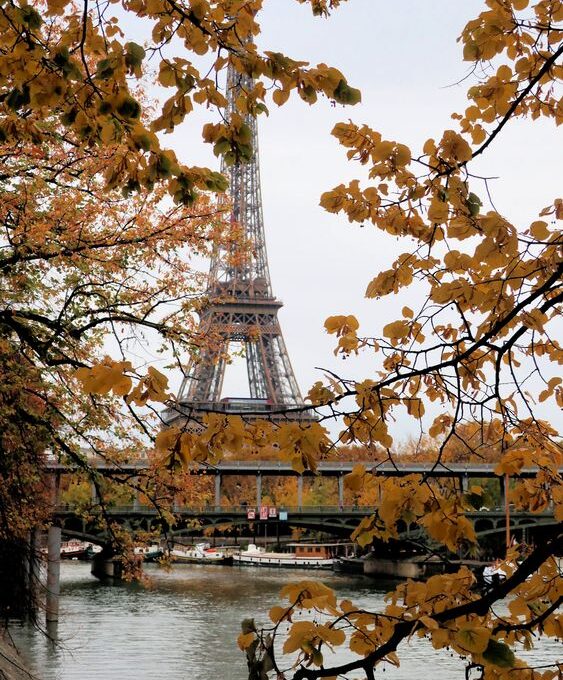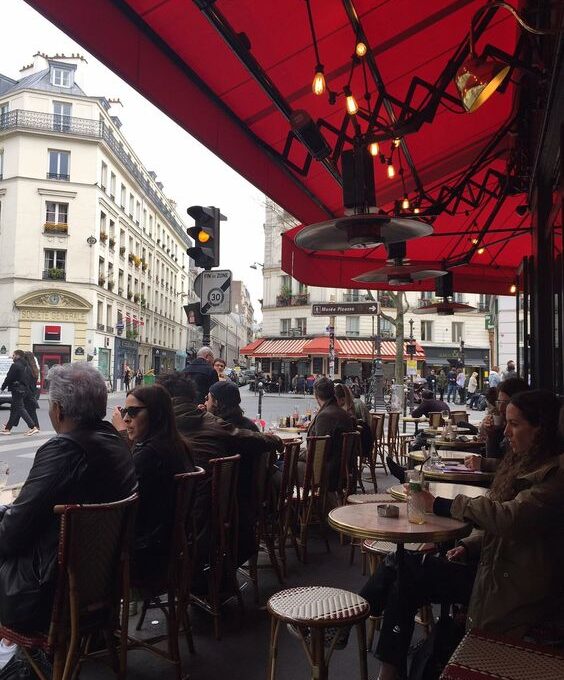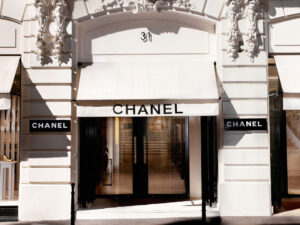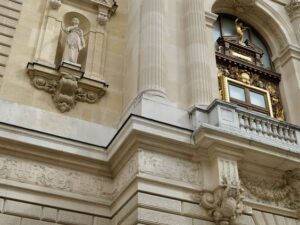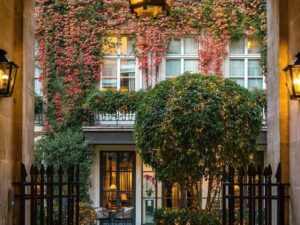Architectural Gems: Best Cathedrals In Paris To Visit
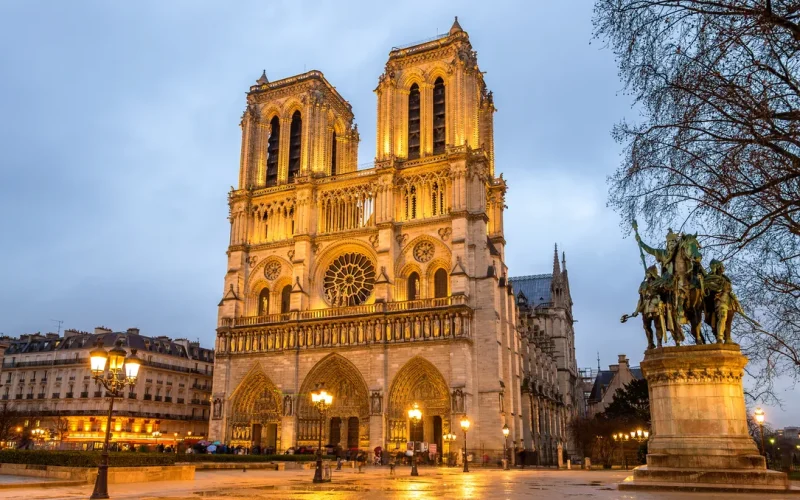
Paris is a city of beauty and culture. It’s home to some of the most stunning cathedrals in the world. From the iconic Notre Dame Cathedral to the lesser-known Saint-Germain-des-Prés, these cathedrals offer visitors a glimpse into Paris’ rich history and architecture.
Notre Dame Cathedral
Notre Dame Cathedral is one of the most famous cathedrals in Paris. It’s located on an island in the middle of the Seine River, so it can be seen from many different places around the city.
The history of Notre Dame Cathedral dates back to 1163 when construction began under King Louis VII and Queen Eleanor of Aquitaine, who were married at this church. The original building was destroyed by fire in 1194 but rebuilt by architect Maurice de Sully during his tenure as Bishop of Paris between 1160-1180 CE (Common Era).
Notre Dame Cathedral has undergone several renovations since then including extensive work done after World War II when much damage had been caused by German bombs dropped on Paris during their occupation of France during WWII.
Notre Dame Cathedral is located on the Ile de la Cite in Paris. It was built between 1163 and 1345, and has been renovated several times since then. The cathedral is famous for its flying buttresses and stained glass windows, which date back to the 13th century.
Mark your calendars! The iconic Notre Dame Cathedral in Paris is set to reopen its doors to the public on December 8th, 2024. While the full interior may not be accessible immediately, visitors can still marvel at the breathtaking exterior and surrounding grounds. While official opening hours haven’t been confirmed yet, historically the cathedral was open Monday-Saturday from 9:30am to 6pm and Sundays from 1pm to 6pm.
Sacré-Cœur Basilica
Sacré-Cœur Basilica is located on the highest point in Paris, Montmartre. It’s a short walk from the Pigalle Metro station or bus stop and there are also two funiculars that can take you up to Sacré-Cœur if you don’t want to walk.
The church was built between 1875 and 1914 by Paul Abadie, who designed many other churches in France during this time period as well. The basilica has been damaged several times over its history: first in World War II when it was bombed by Allied forces; then again during student protests against Charles de Gaulle’s presidency in 1968; finally when terrorists attacked it on August 16th 1994 (this attack killed 6 people). The damage caused by these attacks has since been repaired but there are still bullet holes visible today on some pillars inside!
During World War II, much of the church was damaged by bombs; however, most of these damages have been repaired since then.
Sainte-Chapelle
Sainte-Chapelle is a royal chapel located in the Palais de Justice, on the Île de la Cité in Paris. It was built as part of King Louis IX’s palace between 1242 and 1248, during his reign as king of France. Since its construction, it has been used for many different purposes: as a church (for coronations), an archive and even as a prison. The Sainte-Chapelle is an example of Rayonnant Gothic architecture, with its use of pointed arches and windows that are perfectly proportioned. It has been called “the most beautiful room in all Christendom.”
The building was consecrated as a church in 1248, though it served as an administrative center until 1790 when it became part of the National Assembly during the French Revolution. In 1836 it was given over to house the Museum of Sacred Art which remains there today; however, you can still visit this historic monument during its regular hours: Tuesday through Saturday from 10am – 6pm (closed on Sundays).
Today Sainte-Chapelle is open to visitors who can admire its stained glass windows and architecture while learning more about its history through guided tours or self-guided audio tours available in several languages including English!
Saint-Germain-des-Prés
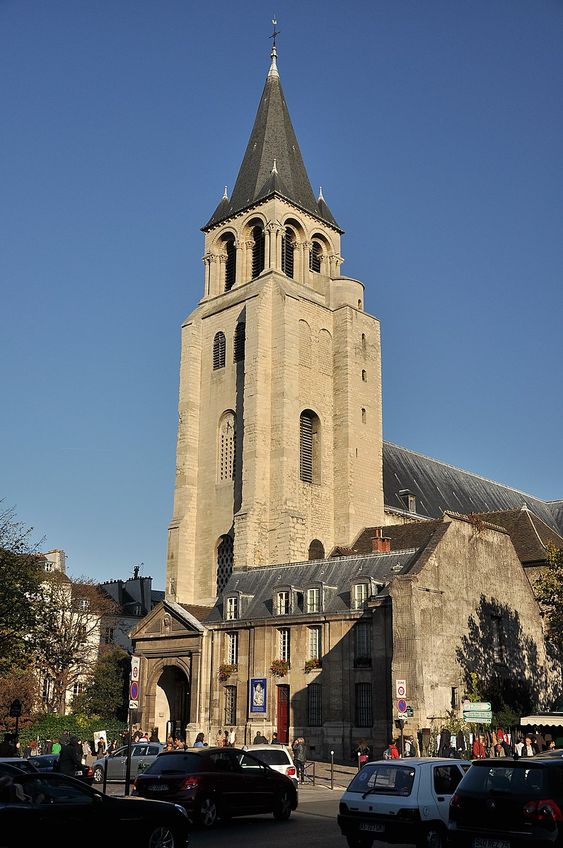
Saint-Germain-des-Prés is located in the 6th arrondissement of Paris, on the Left Bank of the Seine River. The cathedral was built between 1163 and 1250 by King Louis VII, who commissioned it to be built as a shrine for his wife Eleanor of Aquitaine. It was later consecrated by Pope Alexander III in 1180 and has been used as a church ever since.
Saint-Germain-des-Prés has been described as one of France’s most beautiful cathedrals due to its Gothic architecture and stained glass windows that date back hundreds of years ago!
What you may not know about Saint-Germain-des-Prés is that it is oldest cathedral in Paris. It was built in the 11th century and has since been rebuilt several times, most recently during the 19th century. The church is located on the Left Bank of the Seine River, near Place de Furstenberg and Rue du Cherche Midi.
A little known fact: The history of Saint-Germain-des-Prés began when King Louis VI (1081 -1137) decided to build a chapel dedicated to St Genevieve on this site; he wanted it built within three years but was unsuccessful due to lack of funds from his subjects. He then turned over control of construction projects at Notre Dame de Paris Cathedral at Ile de la Cité as well as this one here at Saint Germain des Pres so that both could be finished together by 1152 AD! This wasn’t done until 1225 though due largely because some people felt like they were being forced into paying taxes towards building these churches even though they didn’t want them built at all!
Saint-Sulpice
Saint-Sulpice is a church located on the Left Bank of Paris and was built between 1646 and 1672. It was designed by Louis Le Vau, Jacques Lemercier, and Jules Hardouin Mansart.
The church has a long history with many different uses over time. It was originally built as a Jesuit college but later became an opera house before being converted into a parish church in 1802. The building has been damaged by fire several times throughout its history; most recently during World War II when it was hit by bombs from Allied forces trying to destroy German tanks nearby on Boulevard Saint-Germain (now named after Charles de Gaulle).
Today Saint-Sulpice is considered one of France’s most beautiful churches due to its architecture which combines Gothic Revival styles with Roman Baroque elements like columns made from white marble imported from Italy
Saint-Sulpice is a Roman Catholic church on the Left Bank of Paris, France. The church was built between 1646 and 1653 to designs by Jules Hardouin Mansart, beginning during the reign of Louis XIV and completed during the reign of Louis XV. Its name derives from its location in the Rue Saint-Sulpice within the rue du Faubourg Saint-HonorÃ, one of two streets that were named after a former abbey of St. Sulpice (the other being rue du Cherche-Midi).
Saint-Sulpice has been one of the most important churches in Paris since it was built; it was designed by Hardouin-Mansart as part of his grand plan for urban reconstruction following damage caused by Louis XIV’s siege of Paris during 1649; he also designed Les Invalides next door for wounded soldiers from this campaign; both buildings were finished around 1670 but not dedicated until 1740 under Louis XV; they were restored after being damaged during World War II and reopened in 1952 after extensive work had been done on them – including rebuilding much lost interior decoration such as frescoes painted by Charles Le Brun (1619 – 1690) who worked on many projects at Versailles Palace near Paris.
La Madeleine
La Madeleine is a Roman Catholic church in Paris, France. It was built between 1806 and 1842 by the architect Jean Chalgrin on the site of an earlier church dedicated to Saint Mary Magdalene which had been built in 1622 and destroyed during the French Revolution. The name La Madeleine means “the Magdalen” in French; the church’s title refers to Mary Magdalene who according to Christian tradition was Jesus’ first disciple.
La Madeleine is located at 8 Boulevard de Sainte-Genevieve (on the Right Bank), between rue Royale and rue des Pyramides on Place de la Madeleine, not far from Les Invalides and its museum which houses Napoleon Bonaparte’s tomb as well as other military exhibits.
The history of this cathedral goes back to 1764 when Louis XV wanted to build a church for his wife Queen Marie Antoinette. However, she died before it could be completed so he decided to give it away as a gift for his son Louis XVI and his wife Marie Antoinette instead. They had it built as their private chapel until they were both executed during The French Revolution in 1793-94. Afterward, Napoleon Bonaparte took over control over France during his reign from 1804-1815 where he made La Madeleine into one of Europe’s most important churches by adding sculptures by David d’Angers (1788) along with paintings by Jacques Louis David (1785). He also commissioned Jean Chalgrin who designed many buildings including Les Invalides Museum where Napoleon himself rests today.
Saint-Eustache
If you’re looking for a cathedral with a history and architecture that are both compelling, Saint-Eustache is your best bet. The church was built in the 17th century and still stands today as one of Paris’ most impressive buildings. It’s located close to Les Halles and has been used as an opera house, theater, and concert hall at various points in its history–so if you visit during these times (or even if not), expect some amazing acoustics!
Saint-Eustache also features an organ dating back over 300 years; it’s one of the largest pipe organs in France and was restored after being damaged during World War II by Allied bombing raids on Parisian churches. The organ has been played by famous musicians such as Charles Gounod (who composed Faust) and Camille Saint-Saens (who wrote Carnival of Animals).
The Saint-Eustache Cathedral is a Roman Catholic church located on the Boulevard de Strasbourg in the 1st arrondissement of Paris, France. It was built between 1532 and 1640, with an interior height of 42 meters (138 ft). The building was dedicated to Saint Eustace, who is supposed to have been buried there.
Saint-Eustache has been a working church since 1836; it has never been deconsecrated, but remains a parish church. The Marquis de Sade was married here in 1763 and Louis XVI celebrated his wedding to Marie Antoinette here in 1770; they were married again at Versailles after their escape from Paris during the French Revolution.
The organ of Saint-Eustache has been played by César Franck, Charles-Marie Widor and Camille Saint-Saëns among others.
Saint-Vincent-de-Paul
Saint-Vincent-de-Paul is located in the 10th arrondissement. It was built in 1732 and consecrated in 1735, making it one of the oldest cathedrals in Paris. The church has a single nave with side chapels and an ambulatory around the choir, which is surrounded by an apse with three chapels on each side. The interior decoration includes paintings by Jean Cocteau and Henri Matisse as well as sculptures by Auguste Rodin and Camille Claudel (who was also an artist).
Saint-Vincent-de-Paul is located on the Rue du Faubourg Saint-Antoine, in the 10th arrondissement of Paris. It was built between 1854 and 1860 and consecrated in 1864. The cathedral has a neo-Gothic style with some Romanesque elements, which makes it different from other cathedrals in Paris.
The church was named after Vincent de Paul (1581-1660), a French priest who dedicated his life to helping poor people by founding many charities throughout France during his lifetime. He was canonized by Pope Gregory XVII in 1690; however, his body was lost during the French Revolution when revolutionaries destroyed churches and cemeteries across France so that no trace would remain of Catholic traditions or symbols like crosses or saints’ statues.
Paris is a city of culture and beauty, and its cathedrals are no exception. Whether you’re looking for a historical tour or a religious experience, these cathedrals offer something for everyone. There is something here for everyone–from those who love religious architecture to people who just want some good Instagram photos!
From One It Girl To Another, We Should Keep In Touch. Sign Up For Our Emails!
We Have So Much To Update You On. Sign Up For Exclusives, Deals And More.




